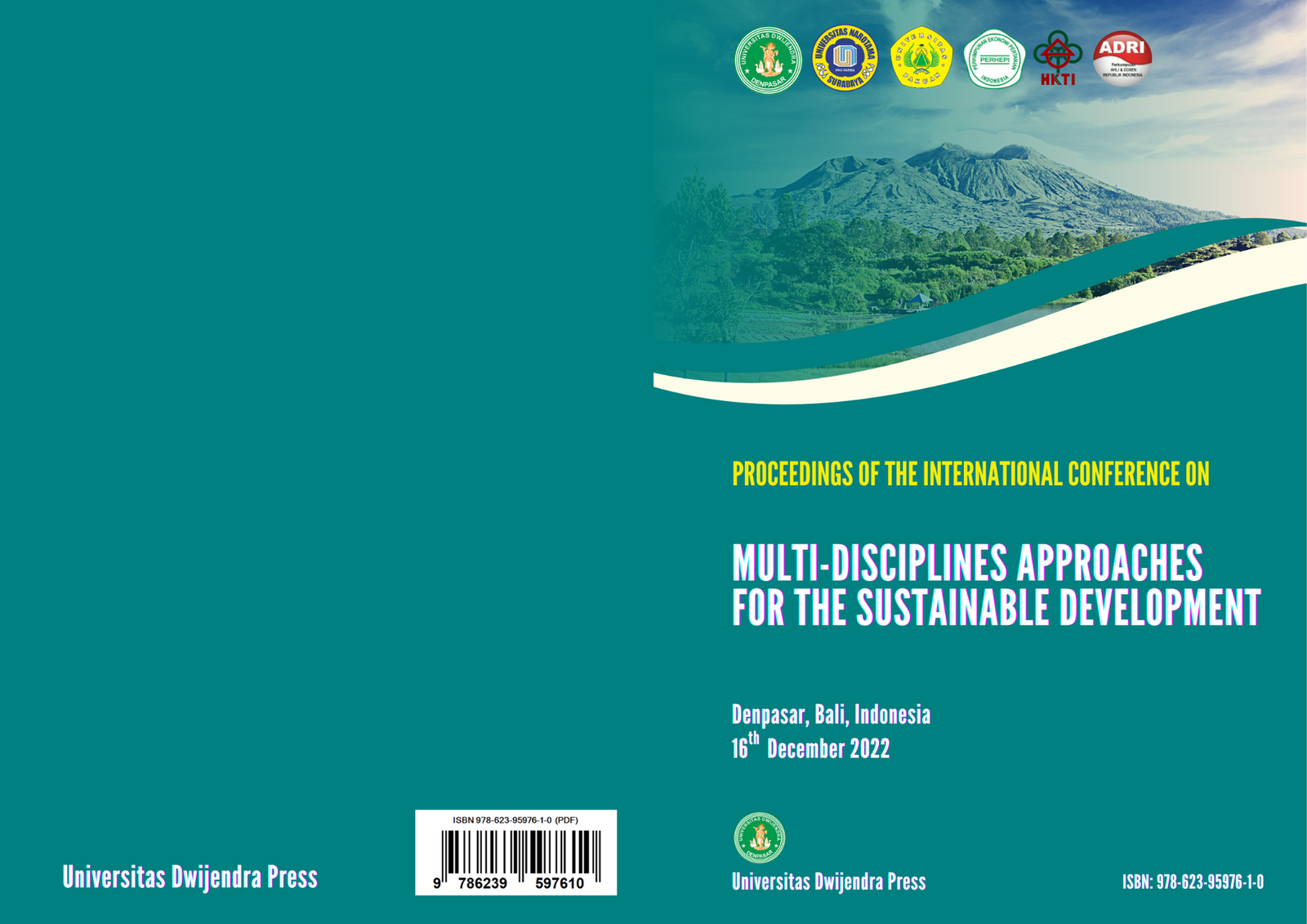CHANGES IN CITY SPATIAL PATTERNS DUE TO URBAN COMMUNITY ACTIVITIES Case Study of Puri Jro Kuta, Denpasar Bali
Abstract
The city as the center of the development of an area is constantly changing along with the increase in community activity. Structuring urban space utilization is slowly but surely moving towards opportunities to obtain more strategic values, especially those related to economic values. Urban spatial planning around Puri Jro Kuta has undergone significant changes from time to time as a result of community dynamics. The purpose of this research is to see changes in the structure and space of the city around Puri Jro Kuta as the center of government during the royal period. This research is a qualitative descriptive study with a phenomenological approach in an architectural perspective (changes in space due to activity). Qualitative research is an option with the consideration that this research will explore as much and as deeply as possible the data in the field, both in the form of data from questionnaires, interviews and others.
The results of the study revealed that the functions of this area are as: 1) environmental functions, 2) social functions, 3) economic functions and 4) aesthetic functions. Meanwhile, the activities that take place in the research area are: 1) cultural activities, 2) social activities, 3) economic activities and 4) non-formal sector activities. Another study is that the change in function is due to the high movility of the community and the increasing need for housing. The increase in needs in the economic sphere also has an impact on almost the entire part that originally functioned only as housing, today added economic functions. So that along the road sections in this area are filled with economic functions.
References
Joseph, L. (2008). Finding Space Beyond Variables: An Analytical Review of Urban Space and Social Inequalit. Spaces for Difference: An Interdisciplinary Journal, 1(2).
Pang, W. K. (2006). Urban morphology of traditional Chinese cities in the context of modernization - a case study of Suzhou. 42nd ISoCaRP Congress 2006.
Prijotomo, J. (2018). GENIUS LOCI : TRANSFORMING THE CULTURAL- INTO Cases for Spirit of Place. Local Geniuses Generate Future Design, 35–39. https://scholar.google.co.id/citations?user=cgFbsKMA
Sarfo, J. O., & Ofori, P. K. (2017). A Book Review: Qualitative Inquiry & Research Design: Choosing Among Five Approaches. Russian Journal of Sociology, 3(1). https://doi.org/10.13187/rjs.2017.1.30
Wiriantari, F. (2016). Penataan Kawasan Tepi Tukad Badung dalam Upaya Pemberdayaan Masyarakat. Anala, 2(14), 1–6.
Wiriantari, F., Paturusi, S. A., Dwijendra, N., & Diasana Putra, I. D. G. (2020). The Value of Catuspatha as a Public Space for the Balinese Community in the Klungkung City , Bali Indonesia : the Struggle for Activities between Politics , Economics and Socio-Culture. International Journals of Advanced Science Technology, 29(12), 23–34.
Yaldız, E., Aydın, D., & Sıramkaya, S. B. (2014). Loss of City Identities in the Process of Change: The City of Konya-Turkey. Procedia - Social and Behavioral Sciences, 140(October 2015), 221–233. https://doi.org/10.1016/j.sbspro.2014.04.413.




